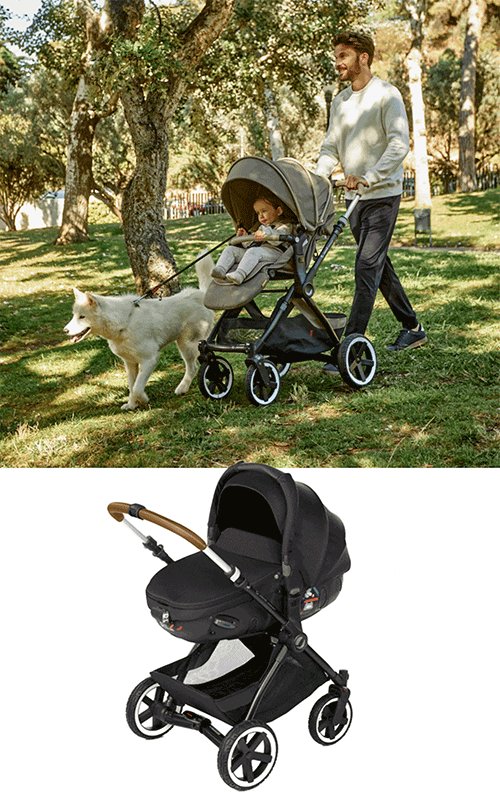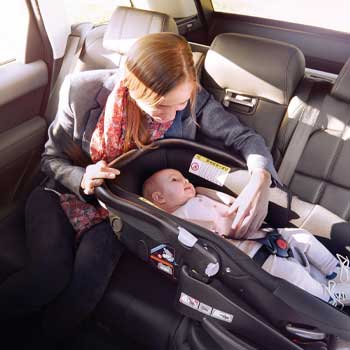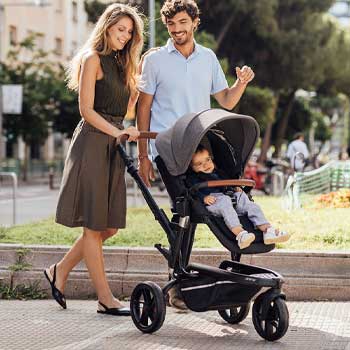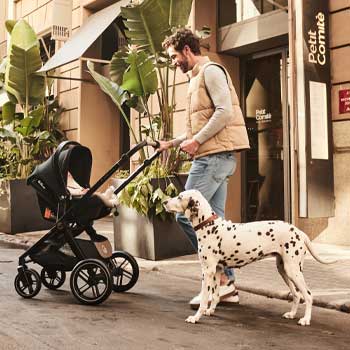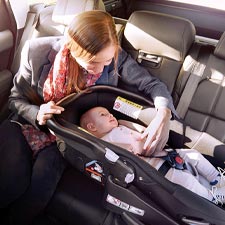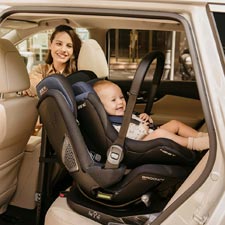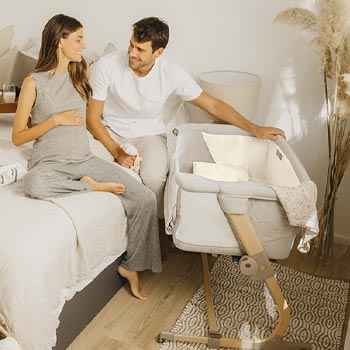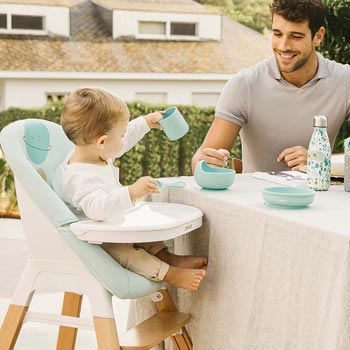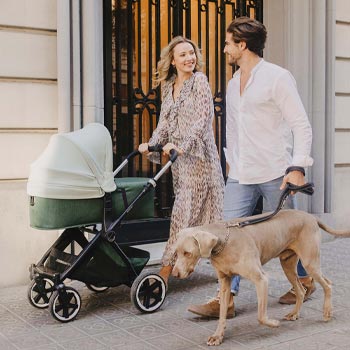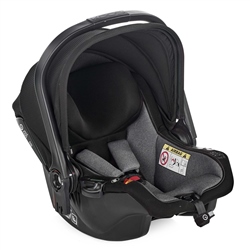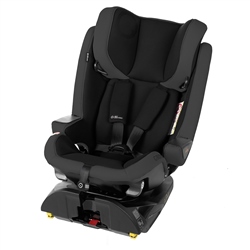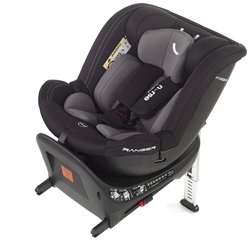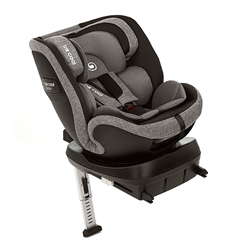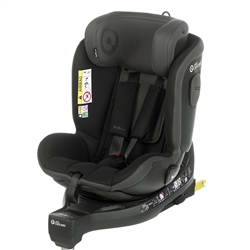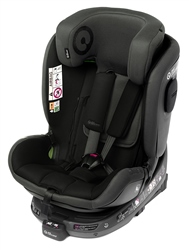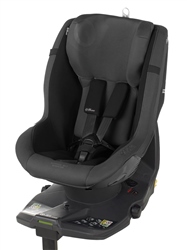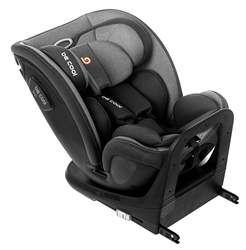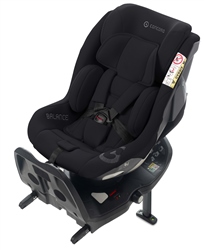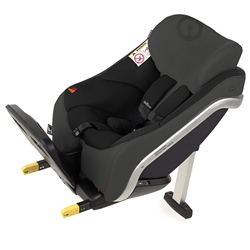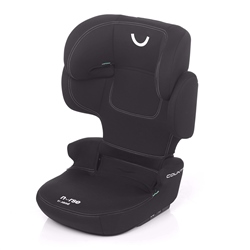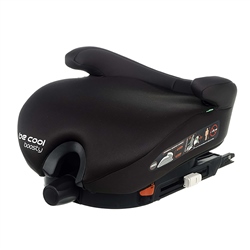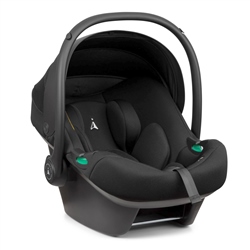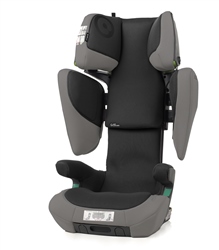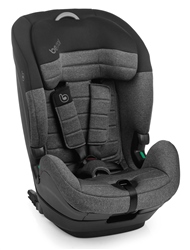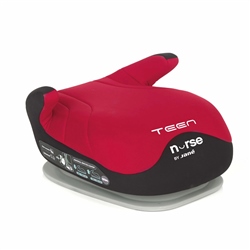Car Seat Buying Guide
 From the very moment your baby leaves hospital right up until they reach 135cm (approx. 12 years old) they will need to travel in a car seat for every journey. Obviously using a child car seat is the best way to keep your child safe in the event of an accident, but it’s also a legal requirement.
From the very moment your baby leaves hospital right up until they reach 135cm (approx. 12 years old) they will need to travel in a car seat for every journey. Obviously using a child car seat is the best way to keep your child safe in the event of an accident, but it’s also a legal requirement.
Children’s growing bodies need to be protected using the right child car seat for their weight or height if using an i-Size car seat.
This guide will help you to understand which car seat you need for wherever you are in your parenting journey.
- The Law
- Choosing a car seat
- Table of groups
- Groups explained
- Extended rear facing
- ISOFIX – what does it mean?
- i-Size
- Benefits of using an ISOFIX base
- How to fit your car seat
- QR barcodes
- Car safety guidelines and tips
- Pushchair buying guide
The law (since Monday 18th September 2006)
- Children less than 135cm tall or under 12 years old must use the child restraint appropriate for their weight in any vehicle (including vans and other goods vehicles).
- The seat must conform to the European standard: ECE R44.04 or i-Size (Regulation 129) and be fitted according to the manufacturer’s instructions.
- Rear-facing infant car seats must not be used in a seat protected by a frontal airbag unless the airbag has been deactivated manually or automatically.
- You must not carry an unrestrained child in the front seat of any vehicle.
- A child may use an adult seatbelt when they reach 135 cm in height or the age of 12 years (whichever is first).
- It is highly recommended that you never buy second hand, even from a friend or relative – it may have damage that you can’t see.
For more advice on the law, refer to the UK Department of Transport website.
Choosing a car seat
For a younger child it’s their weight and not his or her age that is the critical factor in deciding which car seat is suitable and safe.
European regulations define 5 groups of child restraint systems (Group 0, 0+, 1, 2 and 3), each of which is suitable for a range of weights. These are shown in the table below. All the child seats in our range are designed to give your child the best possible protection. Some seats are designed to cover more than one group. All our child car seats are designed to meet the current safety standards as set out in ECE R44.04 or the new i-Size (R129) safety standards.
It’s recommended that a child continues to use a rear facing car seat until they are 4 years old. This is because a child’s body below this age is particularly vulnerable to forceful impacts, and a rear facing seat will provide the additional protection they need in the event of a collision.
Table of Groups
| Group | Child's weight | Approx. age of child |
|---|---|---|
| 0 | Birth - 10 kg (22 lb) | Birth to 12 months |
| 0+ | Birth - 13 kg (29 lb) |
Birth to 15-18 months |
| 0+ and 1 | Birth - 18 kg (40 lb) | Birth to 4 years |
| 1 | 9 - 18 kg (20 - 40 lb) | 9 months to 4 years |
| 1 and 2 | 9 - 25 kg (20 - 55 lb) | 9 months to 6 years |
| 2 | 15 - 25 kg (33 - 55 lb) | 3 to 6 years |
| 1, 2 and 3 | 9 - 36 kg (20 - 79 lb) | 9 months to 12 years |
| 2 and 3 | 15 - 36 kg (33 - 79 lb) | 3 to 12 years |
| 3 | 22 - 36 kg (48 - 79 lb) | 6 to 12 years |
Chart of Groups

Groups explained
Group 0
For birth to 10kg / 22lb (birth to 12 months). Rearward-facing infant car seats or Auto carrycots. Auto carrycots can be installed along the rear seats of your car, usually installed using seat belts and taking up two back seats. They allow newborn babies to travel completely flat which is especially recommended by health officials for longer journeys. And because they lie-flat there is no time limits, so baby can travel for longer, nonstop, and also for overnight sleeping with a safety mattress.
Some models (like the Jané Matrix Light 2) can be installed using an ISOFIX base instead of seat belts, making it the healthiest and safest type on the market.
Group 0+
For birth to 13kg / 29lb (birth to 15/18 months). Rearward-facing infant car seats, the safest way for babies to travel, they have a carry handle (useful for transporting a sleeping baby from the car) and some have curved bases for gentle rocking. Many models can be used with Isofix bases in the car, so you don’t need to use a seatbelt to secure it.
Group 0+ and 1
For birth to 18kg / 40lb (birth to 4 years). This style of car seat is approved across two car seat categories and easily adjusts as your child grows. Used in the rearward-facing position first until your baby is 9kg / 20lbs and can sit unsupported, then you can convert the seat into a forward-facing car seat.
Some models even allow for extended rear facing to 4 years, like the Jané Gravity and Jané Protect models.
|
| ||||||||||||||||
Group 1
9 -18kg / 20-40lb (9 months to 4 years). Recognisable by deep sides and head support for impact protection. Most models are forward-facing and installed by seat belts, newer models can be installed using ISOFIX which offer better safety and easier installation.
|
| ||||||||||||||||
Group 1, 2 and 3
9-36kg / 20-79lb (9 months to 12 years). This forward-facing model is approved across three car seat groups, so makes a good long-lasting option. These models usually include a 5 point safety harness or impact shield for the earlier stages and then easily adapts as your child grows, converting to a high back booster seat – ideal for older children until they can safely use an adult seatbelt.
Group 2 and 3
For 15-36kg / 33-79lb (3 to 12 years). Approved across Group 2 and 3, this model will provide a safe seat for your child up to 36kg. A highback booster car seat is ideal for older children until they can safely use an adult seatbelt.
Booster seats without a highback are not recommended as they give no upper protection whatsoever. Jané do not manufacture these types of seats.
Extended Rear Facing Car Seats
Nobody wants to be involved in a car accident, but sometimes they do happen regardless of how safe a driver you are. The most dangerous type of car accidents are frontal collisions. They are also the most common type of incident and generally take place at the highest speeds. When a car crashes in a frontal collision, all the occupants continue to move forwards until their seatbelt or harness stops them, holding them in place so they don't hit the inside of the car.
However, this G-force can cause a lot of strain on the areas of the body held back by the belts, and also on the head and limbs, which are flung forward too. Babies bodies are different from adults: they’re not fully developed, so they can suffer severe injuries to their neck, spine and internal organs from the force of a crash, especially if they are not strapped in properly or in the wrong type of car seat.
"In a frontal crash, in a forward facing car seat, a baby's neck is subjected to a force equivalent to 300kg, that's about 45 stone of weight on a baby's neck."
In a rear facing car seat, the baby is flung into the back of the car seat and the force of impact is distributed along the whole back of the car seat. The neck, spine and internal organs are not subjected to the stress of the force and are therefore protected.
Extended rear-facing car seats will keep your baby facing backwards until they’re around 4 years old (or until they’re 105cm tall for i-Size seats), and their bodies are a bit stronger. This means you won’t have to buy another car seat for a while, and will get maximum value and safety from your initial purchase.
We recommend keeping your baby rearward-facing for as long as possible, in an infant car seat up until they are 15 months old, they reach the weight limit for the car seat, or the crown of their head is above the top of the seat – which means it won’t be as protected in a crash.
| Sort By |
|
| |||||||||||||||
|
|
|||||||||||||||
|
|
|
||||||||||||||
|
|
|
||||||||||||||
| ||||||||||||||||
ISOFIX - what does it mean?
ISOFIX stands for 'International Standards Organisation Fix', a standard which makes fitting a child seat quick, simple and safe.
The ISOFIX system uses latches on the back of the child car seat which attach to fixed anchorage points in the car, effectively creating a rigid link between the two. The benefit of ISOFIX is that it's easier for parents to be confident they have the correct fit, than when they use a three point adult seat belt to secure a car seat. ISOFIX helps ensure the best possible protection in the event of an accident.
The first car to have Isofix was the Volkswagen Golf IV in 1997. Since 2004 it has become more widely offered and now all new cars have Isofix on at least some of the back seats. Top tether anchor points have come as standard since the end of 2012.
i-Size car seats will fit into all i-Size cars and almost all cars with ISOFIX points.
The 3 types of ISOFIX:
- Universal - Three ISOFIX anchorage points (two ISOFIX anchorage points with a third being top tether strap).
- Semi-Universal - Two ISOFIX anchorage points with a supportive leg. It is a car specific solution, so you should refer to the car seat compatibility listing to ensure it fits your car. In most cases it's usually only underfloor storage compartments that may cause some installation issues.
- Car Specific - Two Isofix anchorage points which can be converted to 'Universal' by using a top tether strap.
| Sort By |
| ||||||||||||||||
| ||||||||||||||||
|
|
|||||||||||||||
|
|
|
||||||||||||||
|
|
|||||||||||||||
|
| |||||||||||||||
|
|
|
||||||||||||||
|
| |||||||||||||||
i-Size
The new i-Size standard (R129), which was introduced in early 2014, has brought in additional crash testing and new technologies, which aim to ensure better safety for your child and more compatibility between car seats and vehicles. This new regulation will run in parallel with the current ECE R44.04 standard.
It is worth noting that car seats meeting the new i-Size standard must use ISOFIX and pass a side impact test, which isn’t required for the ECE R44.04 standard.
i-Size car seats are still in the early stages of development and there are limited numbers of the seats and compatible vehicles currently available, so watch out for future Jané i-Size products coming very soon.
It is also worth noting that i-Size car seats will fit into all i-Size cars and almost all cars with ISOFIX points.
For more detailed information on i-Size, see our Introduction to i-Size guide.
| Sort By |
| ||||||||||||||||
| ||||||||||||||||
|
|
|||||||||||||||
|
|
|
||||||||||||||
|
|
|||||||||||||||
|
|
|||||||||||||||
|
|
|
||||||||||||||
| ||||||||||||||||
The Benefits of Using an ISOFIX Platform / Base: Convenient travel
Most Group 0+ infant car seats use a separate base system. The benefit of this is that once you’ve fitted the base in your car you won’t need to refit it on every journey. Instead, you can quickly and easily attach the compatible car seat in seconds instead of minutes with seat belts.
Jané has also pioneered a system called PROFIX which is the pushchair equivalent of ISOFIX and allows you to connect the infant car seat or carrycot onto the car seat ISOFIX base in the car and also onto the pram chassis with just one movement, and without the need for awkward “fitting kits”.
Watch for underfloor storage
The majority of ISOFIX bases need additional fixings for the restraint, which is provided by a supportive leg; this needs to be in contact with the floor of your car.
You must not use a support leg if you have underfloor storage as the lids aren’t designed to withstand the forces in a collision. Always check with the car manufacturer as they may have suitable solutions for this issue. It’s worth noting that newer ISOFIX bases and i-Size car seats have longer supports legs which allow the leg to reach to the floor on an opened underfloor storage compartment.
Using a base for ease and efficiency is a great option, but remember it’s only going to help keep your child safe if you ensure they are also secured into the restraint correctly on every journey.
How to fit your car seat
Correct fitting of all car seats is crucial. All Jané car seats have clear instructions and in many different languages for safe fitting and use. Jané also pioneered the use of QR codes on child car seats. These QR barcodes, found on most car seats in our range, when scanned by a smart phone will play a video installation guide.
You can also download instructions and watch installation video guides from this website.
QR barcodes
Jané uses digital technology to help keep children safer when travelling in cars.
According to the Royal Society for the Prevention of Accidents, 70 per cent of child car restraints are fitted incorrectly, putting a large number of young children at risk. Jané sells car seats with clever interactive barcodes, known as QR codes, to tackle this alarming problem.

Jané was the first brand in the UK nursery sector to embrace this innovative technology. When scanned with a Smart Phone these codes, which are positioned on the side of the car seat, reveal a video fitting guide along with extra information about the seat.
There is no doubt that many people find fitting a car seat daunting. These codes are a real step-change in educating the public about using car seats correctly and could save babies and young children’s lives.
Which? child car seat experts say that most parents struggle when it comes to fitting child car seats correctly. In their investigation into Child Car Seat Retailer Advice, they found staff in almost half the stores they visited didn't know how to install child car seats correctly. So, offering people the chance to watch a fitting video on their smart phones, wherever they are, must be a positive step forward.
Car Safety Guidelines and tips:
DO
- Always use a child restraint system appropriate to your child's weight and development and until your child reaches 135cm in height or their 12th birthday, whichever is sooner. Remember it’s the law.
- Read the fitting instructions carefully.
- Practise a few times using the car seat before putting your child in it for the first time.
- Ensure that everyone who will be fitting the car seat is confident in doing so.
- Use the car seat for every car journey, however short.
- Check the car seat regularly to ensure it is firmly in position every time you use it.
- Discourage your child from playing with the buckles.
- Check regularly for wear and tear on harness, buckles and seat shell.
- Check that shoulder straps are slightly below the child's shoulders in a Group 0 and 0+ car seats, and level with, or slightly above the shoulders for forward-facing seats.
- Check the safety harness is firm. You should only be able to get two fingers between the straps and your child's chest.
- A handy tip is to use an additional rear-view mirror to keep an eye on your child, to avoid having to look around while driving.
DON'T
- Don't ever use a second-hand car seat, even from a friend or relative as there could be invisible damage to the structure that you can’t see.
- Never use a car seat that has been in an accident, however minor. There may be invisible damage that you can’t see.
- Don't leave metal parts and fittings exposed on hot sunny days - they can get very hot. Keep a blanket in the car to cover the seat when not in use.
- Never leave heavy or sharp objects loose in the car, put them in the boot, so if you’re involved in a collision they won’t fly around your vehicle and injure the occupants.
- Never leave your child unattended in the car, not even for a moment.
- Never cover or modify buckles to prevent your child from playing with them, as this may seriously affect the quick release mechanism in an accident.
- Never put an adult belt round an adult and child together.

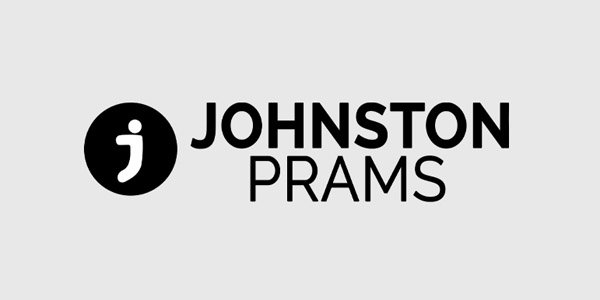
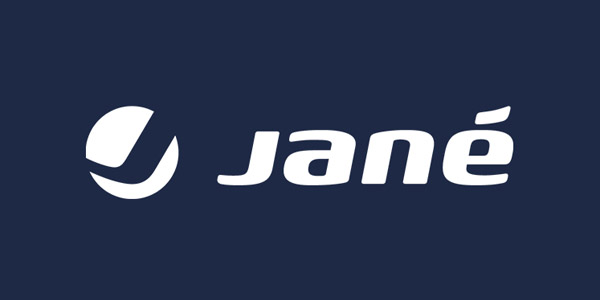
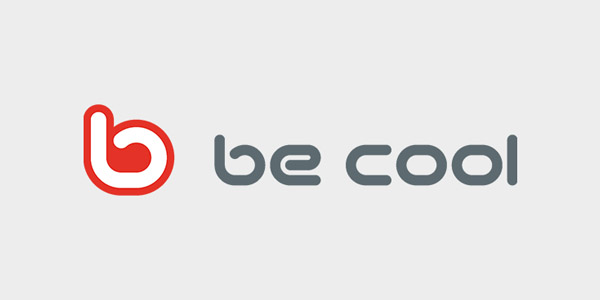


.jpg)

